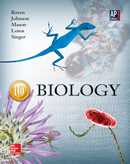1 NOT involved with excision-repair of damaged DNA?A) The UvrABC complex. B) Recognition of damage. C) Removal of damage region. D) Resynthesis using the information on the undamaged strand as a template. E) All of these are involved with excision-repair of damaged DNA. 2 A) Cytosine, ribose, and phosphate. B) Amino group, phosphate, and pentose sugar. C) Phosphate, ribose, and nitrogenous base. D) Nitrogenous base, phosphate, and pentose sugar. E) Pentose, cytosine, and phosphate. 3 A) True B) False 4 A) demonstrates that most mutagens operate on DNA using similar chemical mechanisms of action. B) reduces natural sources of mutation. C) means that organic food and products are unlikely to cause DNA damage. D) eliminates sources of mutation except for ultraviolet light. E) only reduces the load of mutagens we are exposed to, but does not eliminate them. 5 A) a phosphate group B) a hydroxyl group C) a carbonyl group D) a deoxyribose sugar E) a carboxyl group 6 A) sugars. B) paired bases. C) phosphates. D) a sugar and a phosphate molecule. E) sulfur bonds. 7 A) 70% is deoxyribose. B) 20% is guanine. C) 30% is adenine. D) 20% is guanine, and 30% is adenine. E) 50% is guanine 8 A) bases are covalently bonded to one another. B) sugars are composed of 8 carbon rings. C) bases are hydrogen bonded to one another. D) nucleotides are hydrogen bonded to one another. E) All of the choices are correct. 9 A) DNA B) mRNA C) rRNA D) protein E) tRNA 10 A) James Watson B) Francis Crick C) Matthew Meselson D) Franklin Stahl E) Rosalind Franklin 11 NOT true about DNA?A) It has the structure of a double helix. B) Bases between the two strands are held together by hydrogen bonds. C) Bases are complementary to each other. D) DNA incorporates a deoxyribose sugar. E) DNA contains adenine, guanine, cytosine, and uracil. 12 A) each base forms hydrogen bonds with a complementary base. B) each base forms hydrogen bonds with the same type of base. C) bases do not form hydrogen bonds. D) uracil bonds with adenine. E) ribose sugars bond with complementary bases. 13 A) DNA polymerase. B) RNA polymerase. C) helicase. D) ribozyme. E) lipase. 14 A) TAGCAT B) ATCGTA C) CAGTCT D) ATGCTA E) UAGCAU 15 A) Polymerase activity. B) Helicase activity. C) The size of the replication complex. D) Priming mistakes. E) Telomere length.





